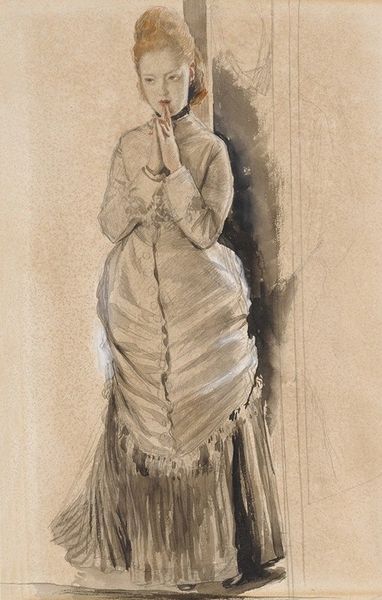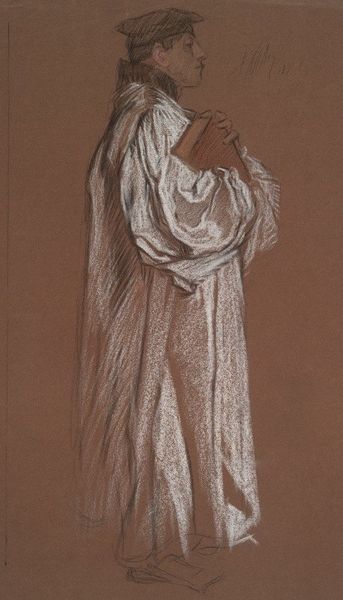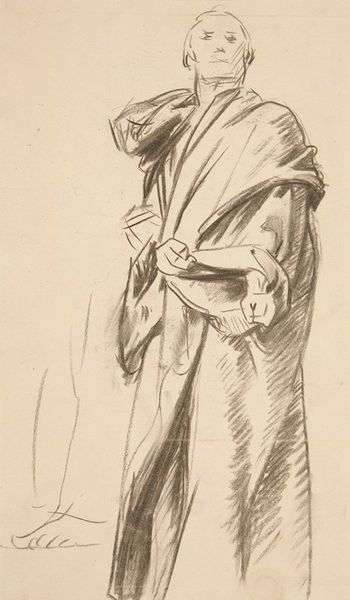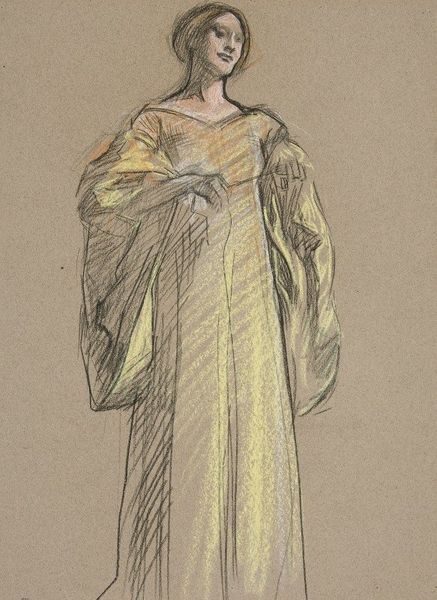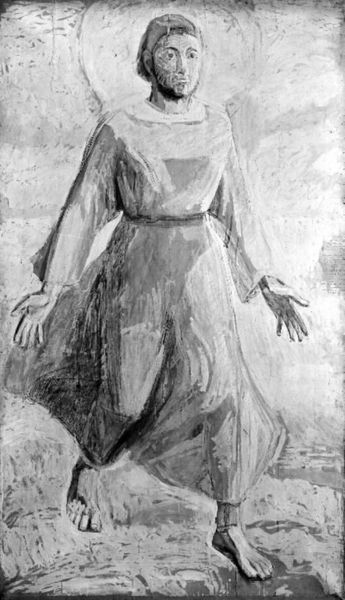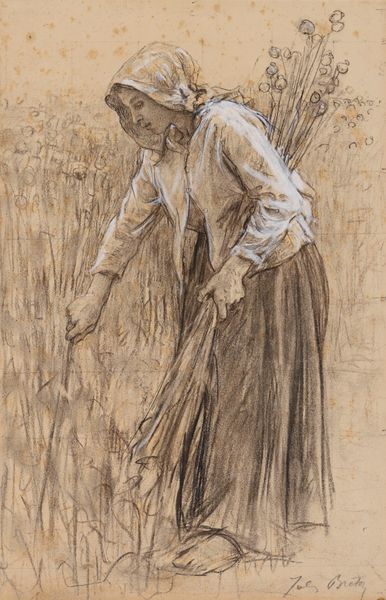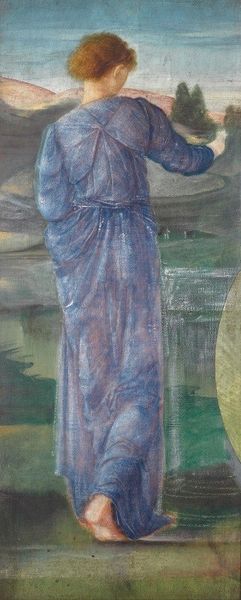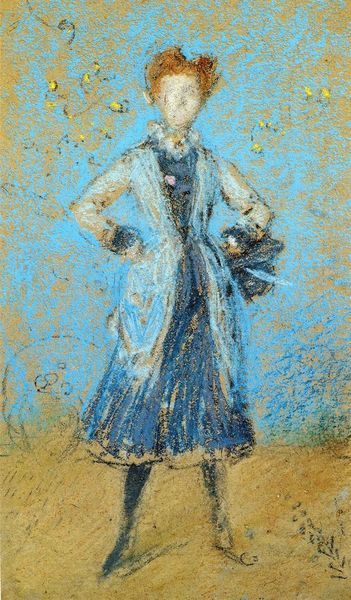
Young woman in white; Miss Cynthia – Illustration for ‘The House with Cross’
0:00
0:00
drawing, watercolor
#
portrait
#
drawing
#
impressionism
#
figuration
#
watercolor
#
portrait art
#
watercolor
Copyright: Public Domain: Artvee
Editor: Here we have "Young woman in white; Miss Cynthia – Illustration for ‘The House with Cross’" by John White Alexander. It's rendered in watercolor and drawing. The ethereal quality created by the soft washes really strikes me. What's your interpretation? Curator: Well, knowing it's an illustration provides a key starting point. Illustrations inherently serve a public function, they're designed to communicate to a wider audience within a specific cultural context. The story it accompanied likely shaped the public’s perception of women at the time. Given that she is veiled, in white, and called “Miss Cynthia”, what might this artwork and character represent for late 19th or early 20th century audiences regarding the role of women? Editor: I'm guessing purity, maybe fragility? There's a certain aloofness in her gaze. The whiteness and veil definitely point to societal expectations and limitations, rather than freedom. Curator: Precisely. And consider the institutions shaping Alexander’s career. Who was commissioning his work? Was he showing in salons, galleries? These venues and patrons further shaped both the art itself and the narrative it conveyed to the public. Could the "House with Cross" title imply expectations surrounding religion, charity, or domesticity for young women of the period? Editor: That's a really interesting perspective – thinking about how institutions and popular stories would mold viewers' perception of her character. It really contextualizes the piece beyond just a pretty picture. Curator: Absolutely. Looking beyond aesthetic qualities to the cultural currents is crucial. What institutions and beliefs did this illustration reinforce or perhaps subtly critique? Editor: That’s made me see how art and storytelling intertwine to reflect and shape social values. Thanks, it has provided a more robust and analytical understanding of portrait art!
Comments
No comments
Be the first to comment and join the conversation on the ultimate creative platform.
